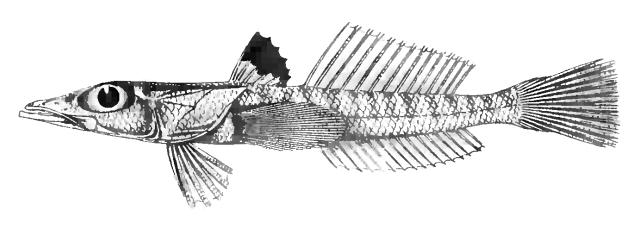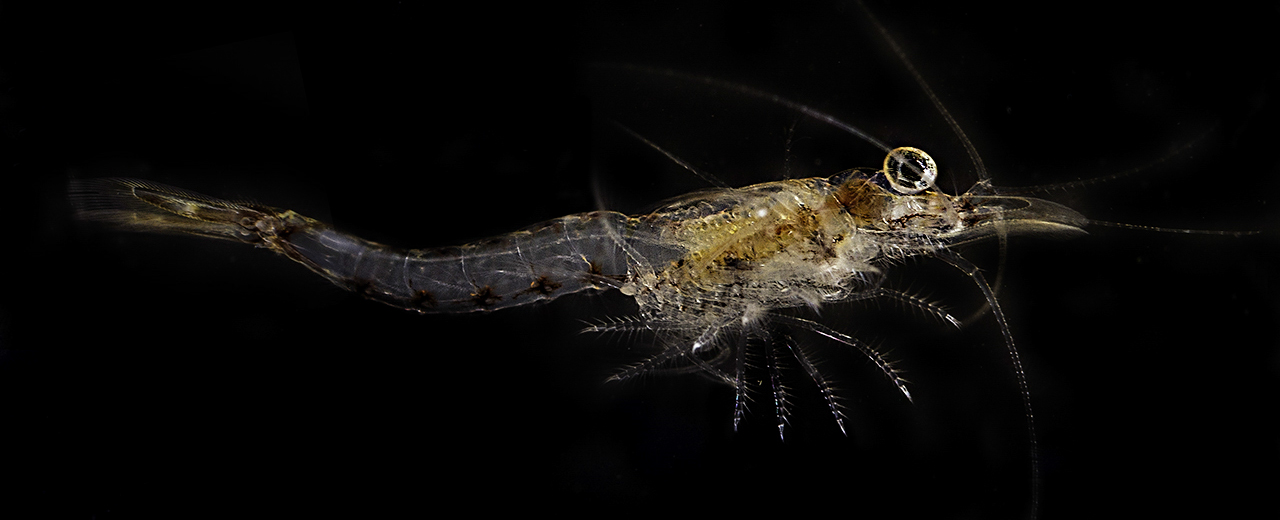|
Matsubaraea
''Matsubaraea'' is a monotypic genus of percomorph fish from the subfamily Hemerocoetinae. The only species in the genus, ''Matsubaraea fusiforme'' is found in the western Pacific in the waters around Japan, Thailand and the Philippines on sandy substrates. It feeds on mysids. The generic name honours the Japanese ichthyologist Shinnosuke Matsubara was a Japanese businessman and investor. He was the founder of the Nomura Group zaibatsu who formed Nomura Securities in 1925.The House of Nomura, ''Al Alletzhauser'', Bloomsbury Publishing Limited () In 1928, he was appointed to the House of ... who was director of Imperial Fisheries in Tokyo. References {{taxonbar, from=Q2403682 Percophidae Monotypic fish genera Fish described in 1943 ... [...More Info...] [...Related Items...] OR: [Wikipedia] [Google] [Baidu] |
Percophidae
The Percophidae, duckbills, are a family of percomorph fishes, from the order Trachiniformes, found in tropical and subtropical waters of the Atlantic and Indian Oceans and in the southwestern and southeastern Pacific. They are small fishes: the largest species, the Brazilian flathead, ''Percophis brasiliensis'', grows up to about , but to is more typical. A few species are fished commercially, including the Brazilian flathead. Characteristics The species in the family Percophidae are elongated, benthic fishes with an anteriorly depressed head, a broad flat snout which gives rise to the common name duckbills. The mouth is large with a prognathous lower jaw and exposed maxilla. They have large closely placed eyes. There are two spines on the opercula and one on subopercula. They have tiny conical teeth on the mandibles and on the vomer and palatine bones. There are two dorsal fins an anterior dorsal fin with 6 slender spines and a posterior dorsal fin with 13 to 18 soft rays ... [...More Info...] [...Related Items...] OR: [Wikipedia] [Google] [Baidu] |
Hemerocoetinae
Hemerocoetinae is a subfamily of percomorph bony fishes, they are part of the duckbill family Percophidae. Genera The following genera are included within the Hemerocoetinae: * '' Acanthaphritis'' Günther, 1880 * '' Dactylopsaron'' Parin, 1990 * '' Enigmapercis'' Whitley, 1936 * '' Hemerocoetes'' Valenciennes, 1837 * '' Matsubaraea'' Taki, 1953 * '' Osopsaron'' Jordan & Starks, 1904 * ''Pteropsaron ''Pteropsaron'' is a genus of fish in the family Percophidae. Species There are currently 9 recognized species of this genus: * '' Pteropsaron dabfar'' Iwamoto, 2014 Iwamoto, T. (2014): Two New Hemerocoetine Trichonotidae Fishes (Teleostei, Pe ...'' Jordan & Snyder, 1902 * '' Squamicreedia'' Rendahl, 1921 References {{taxonbar, from1=Q15249619 Percophidae ... [...More Info...] [...Related Items...] OR: [Wikipedia] [Google] [Baidu] |
Henry Weed Fowler
Henry Weed Fowler (March 23, 1878 – June 21, 1965) was an American zoologist born in Holmesburg, Pennsylvania. He studied at Stanford University under David Starr Jordan. He joined the Academy of Natural Sciences in Philadelphia and worked as an assistant from 1903 to 1922, associate curator of vertebrates from 1922 to 1934, curator of fish and reptiles from 1934 to 1940 and curator of fish from 1940 to 1965. He published material on numerous topics including crustaceans, birds, reptiles and amphibians, but his most important work was on fish. In 1927 he co-founded the American Society of Ichthyologists and Herpetologists and acted as treasurer until the end of 1927. In 1934 he went to Cuba, alongside Charles Cadwalader (president of the Academy of Natural Sciences of Philadelphia), at the invitation of Ernest Hemingway to study billfishes, he stayed with Hemingway for six weeks and the three men developed a friendship which continued after this trip and Hemingway sent spe ... [...More Info...] [...Related Items...] OR: [Wikipedia] [Google] [Baidu] |
Monotypy
In biology, a monotypic taxon is a taxonomic group (taxon) that contains only one immediately subordinate taxon. A monotypic species is one that does not include subspecies or smaller, infraspecific taxa. In the case of genera, the term "unispecific" or "monospecific" is sometimes preferred. In botanical nomenclature, a monotypic genus is a genus in the special case where a genus and a single species are simultaneously described. In contrast, an oligotypic taxon contains more than one but only a very few subordinate taxa. Examples Just as the term ''monotypic'' is used to describe a taxon including only one subdivision, the contained taxon can also be referred to as monotypic within the higher-level taxon, e.g. a genus monotypic within a family. Some examples of monotypic groups are: Plants * In the order Amborellales, there is only one family, Amborellaceae and there is only one genus, '' Amborella'', and in this genus there is only one species, namely ''Amborella trichopoda.' ... [...More Info...] [...Related Items...] OR: [Wikipedia] [Google] [Baidu] |
Genus
Genus ( plural genera ) is a taxonomic rank used in the biological classification of living and fossil organisms as well as viruses. In the hierarchy of biological classification, genus comes above species and below family. In binomial nomenclature, the genus name forms the first part of the binomial species name for each species within the genus. :E.g. '' Panthera leo'' (lion) and '' Panthera onca'' (jaguar) are two species within the genus ''Panthera''. ''Panthera'' is a genus within the family Felidae. The composition of a genus is determined by taxonomists. The standards for genus classification are not strictly codified, so different authorities often produce different classifications for genera. There are some general practices used, however, including the idea that a newly defined genus should fulfill these three criteria to be descriptively useful: # monophyly – all descendants of an ancestral taxon are grouped together (i.e. phylogenetic analysis should c ... [...More Info...] [...Related Items...] OR: [Wikipedia] [Google] [Baidu] |
Percomorpha
Percomorpha () is a large clade of ray-finned fish that includes the tuna, seahorses, gobies, cichlids, flatfish, wrasse, perches, anglerfish, and pufferfish. Evolution Percomorpha are the most diverse group of teleost fish today. Teleosts, and percomorphs in particular, thrived during the Cenozoic era. Fossil evidence shows that there was a major increase in size and abundance of teleosts immediately after the mass extinction event at the Cretaceous-Paleogene boundary ca. 65 Ma ago. Phylogeny External relationships The two cladograms below are based on Betancur-R ''et al.'', 2017. Percomorphs are a clade of teleost fishes. The first cladogram shows the interrelationships of percomorphs with other living groups of teleosts. Internal relationships The following cladogram shows the evolutionary relationships of the various groups of extant Extant is the opposite of the word extinct. It may refer to: * Extant hereditary titles * Extant literature, surviving liter ... [...More Info...] [...Related Items...] OR: [Wikipedia] [Google] [Baidu] |
Subfamily
In biological classification, a subfamily ( Latin: ', plural ') is an auxiliary (intermediate) taxonomic rank, next below family but more inclusive than genus. Standard nomenclature rules end subfamily botanical names with "-oideae", and zoological names with "-inae". See also * International Code of Nomenclature for algae, fungi, and plants The ''International Code of Nomenclature for algae, fungi, and plants'' (ICN) is the set of rules and recommendations dealing with the formal botanical names that are given to plants, fungi and a few other groups of organisms, all those "trad ... * International Code of Zoological Nomenclature * Rank (botany) * Rank (zoology) Sources {{biology-stub ... [...More Info...] [...Related Items...] OR: [Wikipedia] [Google] [Baidu] |
Mysids
Mysida is an order of small, shrimp-like crustaceans in the malacostracan superorder Peracarida. Their common name opossum shrimps stems from the presence of a brood pouch or "marsupium" in females. The fact that the larvae are reared in this pouch and are not free-swimming characterises the order. The mysid's head bears a pair of stalked eyes and two pairs of antennae. The thorax consists of eight segments each bearing branching limbs, the whole concealed beneath a protective carapace and the abdomen has six segments and usually further small limbs. Mysids are found throughout the world in both shallow and deep marine waters where they can be benthic or pelagic, but they are also important in some fresh water and brackish ecosystems. Many benthic species make daily vertical migrations into higher parts of the water column. Mysids are filter feeders, omnivores that feed on algae, detritus and zooplankton. Some mysids are cultured in laboratories for experimental purposes and ... [...More Info...] [...Related Items...] OR: [Wikipedia] [Google] [Baidu] |
Japan
Japan ( ja, 日本, or , and formally , ''Nihonkoku'') is an island country in East Asia. It is situated in the northwest Pacific Ocean, and is bordered on the west by the Sea of Japan, while extending from the Sea of Okhotsk in the north toward the East China Sea, Philippine Sea, and Taiwan in the south. Japan is a part of the Ring of Fire, and spans an archipelago of 6852 islands covering ; the five main islands are Hokkaido, Honshu (the "mainland"), Shikoku, Kyushu, and Okinawa. Tokyo is the nation's capital and largest city, followed by Yokohama, Osaka, Nagoya, Sapporo, Fukuoka, Kobe, and Kyoto. Japan is the eleventh most populous country in the world, as well as one of the most densely populated and urbanized. About three-fourths of the country's terrain is mountainous, concentrating its population of 123.2 million on narrow coastal plains. Japan is divided into 47 administrative prefectures and eight traditional regions. The Greater Tokyo Ar ... [...More Info...] [...Related Items...] OR: [Wikipedia] [Google] [Baidu] |
Ichthyologist
Ichthyology is the branch of zoology devoted to the study of fish, including bony fish (Osteichthyes), cartilaginous fish (Chondrichthyes), and jawless fish (Agnatha). According to FishBase, 33,400 species of fish had been described as of October 2016, with approximately 250 new species described each year. Etymology The word is derived from the Greek words wikt:ἰχθύς, ἰχθύς, ''ikhthus'', meaning "fish"; and wikt:-λογία, λογία, ''logia'', meaning "to study". History The study of fish dates from the Upper Paleolithic, Upper Paleolithic Revolution (with the advent of "high culture"). The science of ichthyology was developed in several interconnecting epochs, each with various significant advancements. The study of fish receives its origins from humans' desire to feed, clothe, and equip themselves with useful implements. According to Michael Barton (professor), Michael Barton, a prominent ichthyologist and professor at Centre College, "the earliest ichthyolo ... [...More Info...] [...Related Items...] OR: [Wikipedia] [Google] [Baidu] |
Shinnosuke Matsubara
was a Japanese businessman and investor. He was the founder of the Nomura Group zaibatsu who formed Nomura Securities in 1925.The House of Nomura, ''Al Alletzhauser'', Bloomsbury Publishing Limited () In 1928, he was appointed to the House of Peers in Japan. Early life and education He was born in present-day Yao, Osaka. He was known in childhood as ''Shinnosuke''. Business career First fortune Shinnosuke made his first fortune in 1915, investing in Fukushima Boseki, a textile company that was widely believed to be headed for bankruptcy. Shinnosuke knew better: He was a friend of the firm's founder Yutaro Yasuhiro. One day, after a hefty sell-off of the firm's shares, Shinnosuke moved quickly, pestering the management to show him their books. The firm showed bulging order books, the factory was running at full capacity, and the profits had never been better. After seeing the books, he went to the floor of the Osaka exchange and began quietly buying Fukushima Boseki's ... [...More Info...] [...Related Items...] OR: [Wikipedia] [Google] [Baidu] |
Monotypic Fish Genera
In biology, a monotypic taxon is a taxonomic group (taxon) that contains only one immediately subordinate taxon. A monotypic species is one that does not include subspecies or smaller, infraspecific taxa. In the case of genera, the term "unispecific" or "monospecific" is sometimes preferred. In botanical nomenclature, a monotypic genus is a genus in the special case where a genus and a single species are simultaneously described. In contrast, an oligotypic taxon contains more than one but only a very few subordinate taxa. Examples Just as the term ''monotypic'' is used to describe a taxon including only one subdivision, the contained taxon can also be referred to as monotypic within the higher-level taxon, e.g. a genus monotypic within a family. Some examples of monotypic groups are: Plants * In the order Amborellales, there is only one family, Amborellaceae and there is only one genus, '' Amborella'', and in this genus there is only one species, namely ''Amborella trichopoda.' ... [...More Info...] [...Related Items...] OR: [Wikipedia] [Google] [Baidu] |




